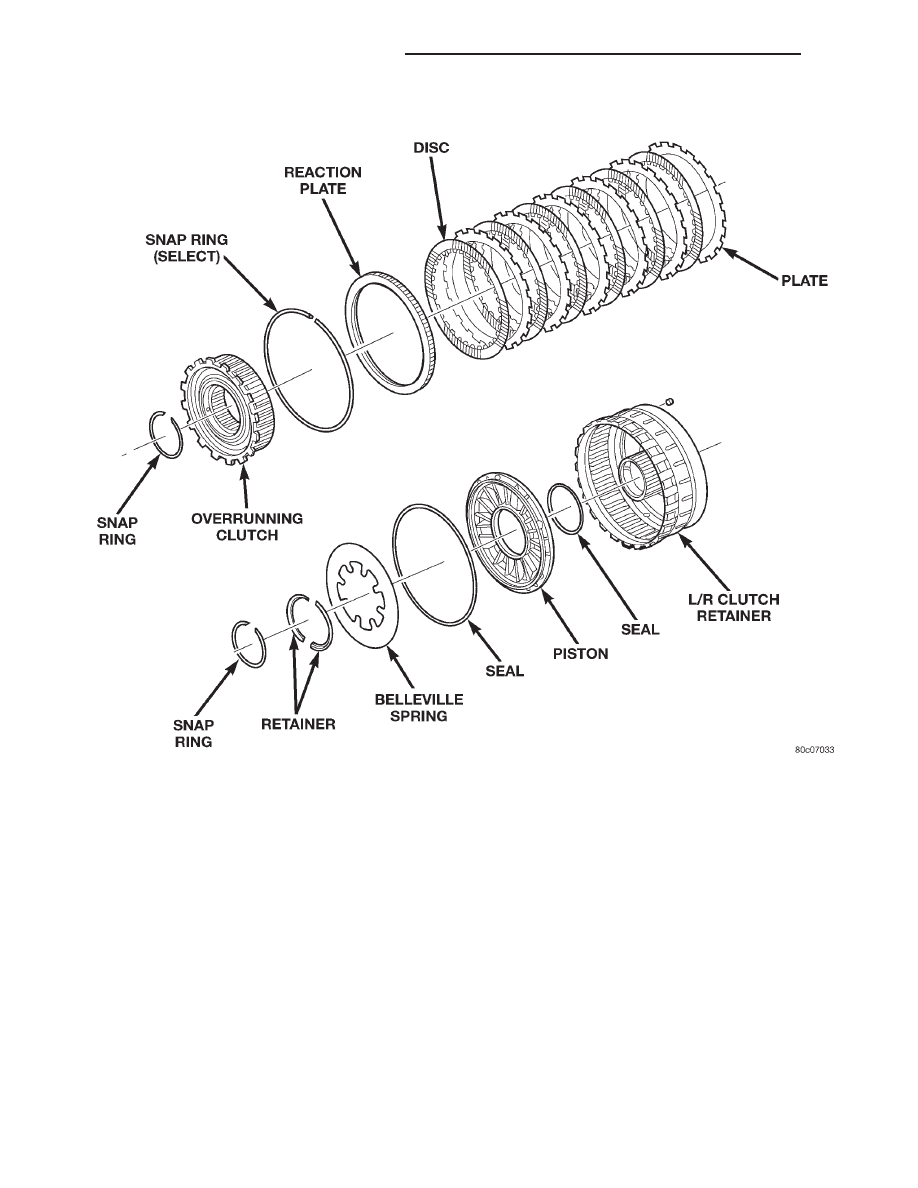Jeep Grand Cherokee WJ. Manual - part 466

(8) Remove the overrunning clutch lower snap-ring
(Fig. 122).
(9) Using Spring Compressor 8285 and a suitable
shop press (Fig. 123), compress the low/reverse pis-
ton Belleville spring and remove the split retaining
ring holding the Belleville spring into the low/reverse
clutch retainer.
(10) Remove
the
low/reverse
clutch
Belleville
spring
and
piston
from
the
low/reverse
clutch
retainer. Use 20 psi of air pressure to remove the pis-
ton if necessary.
ASSEMBLY
(1) Clean and inspect all components. Replace any
components which show evidence of excessive wear
or scoring.
(2) Check the bleed orifice to ensure that it is not
plugged or restricted.
(3) Install a new seal on the low/reverse piston.
Lubricate the seal with Mopar
t ATF+3, type 7176
prior to installation.
(4) Install the low/reverse piston into the low/re-
verse clutch retainer.
(5) Position the low/reverse piston Belleville spring
on the low/reverse piston.
(6) Using Spring Compressor 8285 and a suitable
shop press (Fig. 123), compress the low/reverse pis-
ton Belleville spring and install the split retaining
ring to hold the Belleville spring into the low/reverse
clutch retainer.
(7) Install the lower overrunning clutch snap-ring
(Fig. 122).
(8) Assemble the inner and outer races of the over-
running clutch (Fig. 122).
(9) Position the overrunning clutch spacer on the
overrunning clutch.
Fig. 121 Low/Reverse Clutch Assembly
21 - 246
45RFE AUTOMATIC TRANSMISSION
WJ
DISASSEMBLY AND ASSEMBLY (Continued)